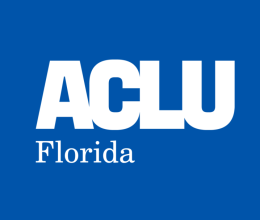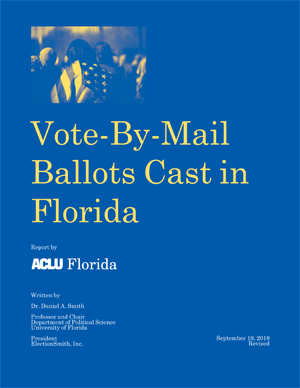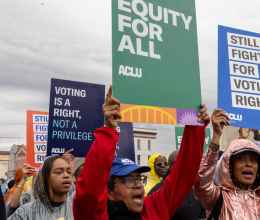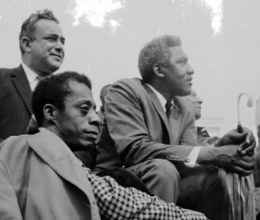
Vote-By-Mail Ballots Cast in Florida
In our new report "Vote-By-Mail Ballots Cast in Florida,” we found that vote-by-mail ballots cast in the 2012 and 2016 general election had a higher rejection rate than votes cast at assigned precincts on Election Day and at early voting sites. We also found that younger voters and racial and ethnic minority voters were much more likely to cast mail ballots that were rejected and were less likely to have their ballots cured.
This report contrasts the rates of rejected vote-by-mail (VBM) ballots in the 2012 and 2016 general elections—statewide broken down by age cohorts and racial and ethnic groups, and across counties.
For Florida to have free and fair elections, all eligible voters must have equal opportunity to vote, including those casting (and curing) VBM ballots.
In addition, drawing on available county-level records, it highlights variations in cure rates of VBM ballots received by Supervisors of Elections in the 2016 general election that initially were deemed invalid because they were contained in return envelopes with mismatched signatures. It finds that younger voters, as well as voters from racial and ethnic minorities, are much more likely to cast VBM ballots that are rejected, and are less likely to cure their VBM ballots if SOE staff flag them for having signature problems.
The report also found that Florida’s counties do not use standardized coding when documenting the reasons for VBM ballots to be initially rejected, processed, or cured.
All voters who choose to VBM should take the extra steps to track their mail ballot and, if there is a problem with the voter’s signature, to use the cure process to ensure that their vote is counted and their voice is heard. If your ballot was rejected because your signature was missing on the return envelope or it does not match the signature on file, you are permitted to mail, fax, email, or hand-deliver to your SOE your signed affidavit, along with a copy of a permissible form of identification. Click here for more step-by-step instructions on how to ensure your vote-by-mail ballot counts.

Download the report
Summary
This report contrasts the rates of rejected vote-by-mail (VBM) ballots in the 2012 and 2016 general elections—statewide broken down by age cohorts and racial and ethnic groups, and across counties. In addition, drawing on available county-level records, it highlights variations in cure rates of VBM ballots received by Supervisors of Elections in the 2016 general election that initially were deemed invalid because they were contained in return envelopes with mismatched signatures. It finds that younger voters, as well as voters from racial and ethnic minorities, are much more likely to cast VBM ballots that are rejected, and are less likely to cure their VBM ballots if SOE staff flag them for having signature problems.
Principal Findings
- Mail ballots (commonly referred to as “Vote by Mail” or VBM) have had a higher rejection rate than votes cast at assigned precincts on Election Day and at Early Voting sites;
- There is a lack of uniformity in the Vote by Mail process as well as procedures to cure invalid ballots across Florida’s 67 counties, leading to considerable variation in rejection rates and cure rates by counties;
- Younger and racial and ethnic minority voters were much more likely to have their VBM ballots rejected, and less likely to have their VBM ballots cured when they are flagged for a signature problem;
- Younger and racial and ethnic minority voters casting VBM ballots were at least twice as likely as older and white voters to have their VBM ballot rejected in the presidential elections of 2012 and 2016;
- The likelihood of younger and minority voters casting a mail ballot that was rejected increased in 2016 compared to 2012 while the rejection rate of VBM ballots cast by white voters decreased;
- Florida voters were more likely to have their vote tabulated and validated if they cast their ballot in person at an Early Voting site or at their assigned Election Day polling location.
Policy Recommendations
To ensure that all eligible voters have an equal access to the voting process and to have their vote processed, tabulated, and accepted as valid:
- There should be greater statewide uniformity in the design of mail ballots and the return VBM envelope;
- There should be greater uniformity in the procedures employed by Supervisors of Elections, their staff, and canvassing boards to process, validate and, if necessary, cure VBM ballots;
- The Florida statewide voter history file (the FVRS database) should include information about why a voter’s mail ballot was rejected, including whether it was rejected because it lacked a signature or the voter’s signature was mismatched, and if the voter attempted to cure the VBM ballot if it was flagged as invalid;
- The October 17, 2016 Memorandum to Supervisors of Elections (SOEs) from Secretary of State Ken Detzner should be revised to include specific procedures that county election officials should follow when notifying voters of a rejected VBM ballot and the cure process for missing and mismatched signatures;
- The Florida Division of Elections should study procedures for processing VBM ballots as well as procedures in place for voters to cure an invalid mailed ballot, promoting “best practices” from those counties with the lowest rejection and highest cure rates;
- The legislature should create guidelines for how SOEs shall notify voters of their rejected ballot status and how voters can cure their VBM ballot prior to Election Day.
Download the report
ABOUT THE AUTHOR
Daniel A. Smith is Professor and Chair of Political Science at the University of Florida. He is the President of ElectionSmith, Inc., and a former Senior Fulbright Scholar in Ghana, West Africa. He has served as an expert witness in numerous voting rights lawsuits in Florida and across the country, working closely with the ACLU, the NAACP, Demos, the Campaign Legal Center, Mi Familia, SEIU, and numerous other voting rights groups. Dr. Smith holds a M.A. and a Ph.D. from the University of Wisconsin-Madison; he went to Penn State for his undergraduate degrees in Political Science and History. Dr. Smith’s research broadly examines how political institutions affect political behavior across and within the American states. In addition to publishing over 100 peer-reviewed articles, book chapters, and research reports on voting and elections in the American states, his authored and coauthored books include Tax Crusaders and the Politics of Direct Democracy (Routledge, 1998), Educated by Initiative (University of Michigan Press, 2004), and State and Local Politics: Institutions and Reform (4th edition, Cengage, 2015). He is widely quoted in the Florida and national media.
Related content


Five State and Local Entities Safeguarding Our Civil Rights
March 25, 2025
Anniversary of ‘Bloody Sunday’ Marks Continued Fight for Voting Rights
March 24, 2025
60 Years After Selma, We Face an Anti-Human Rights Backlash
March 20, 2025
Florida House Subcommittee Passes Bill that Attacks the Citizen-Led...
March 6, 2025
Lawmakers and Civil Rights Organizations Announce Revised and...
March 5, 2025
HB 831 - Creates Barriers to Voting
March 4, 2025
HB 1205 - “Pay to Have a Say”
March 4, 2025